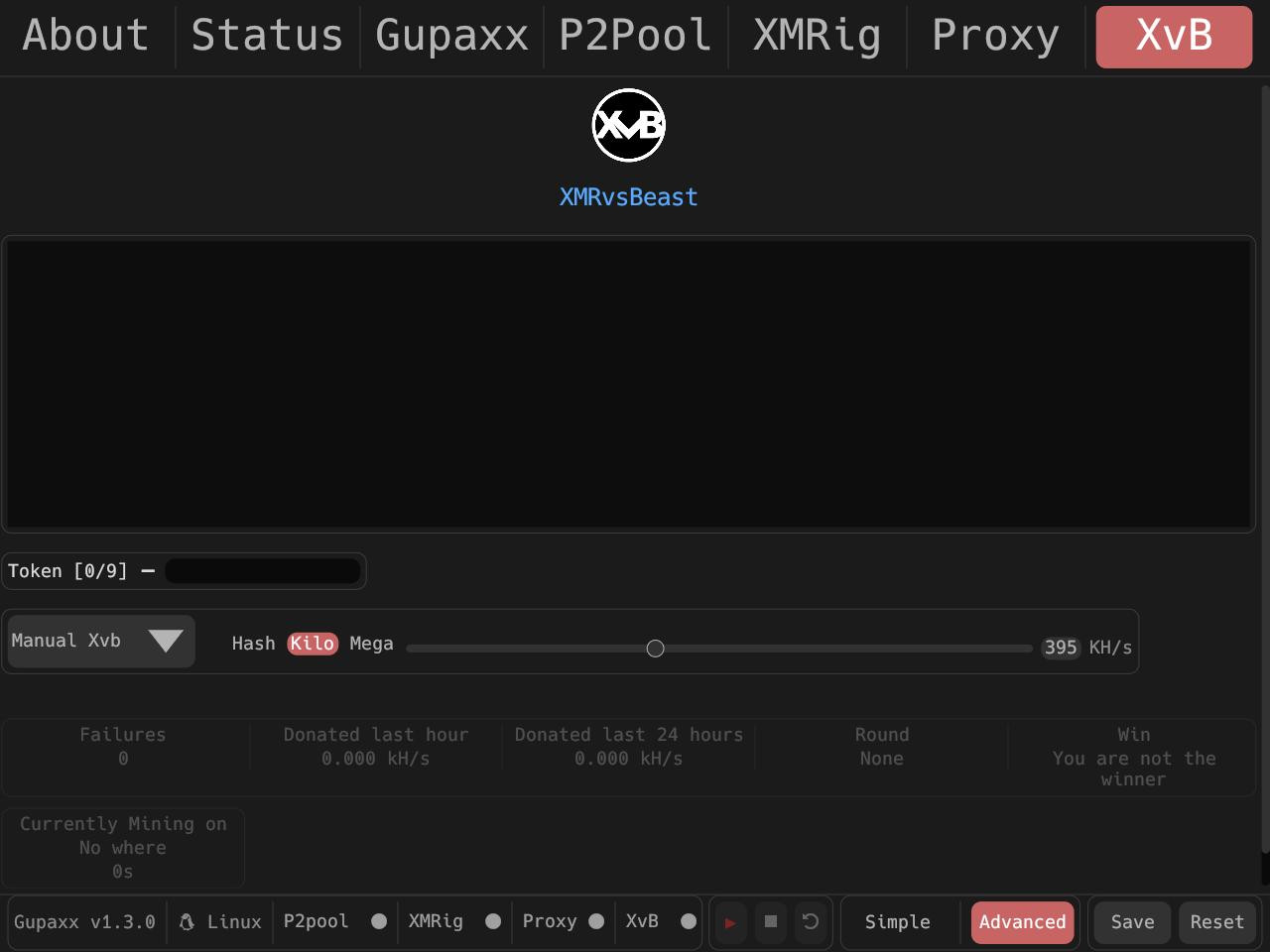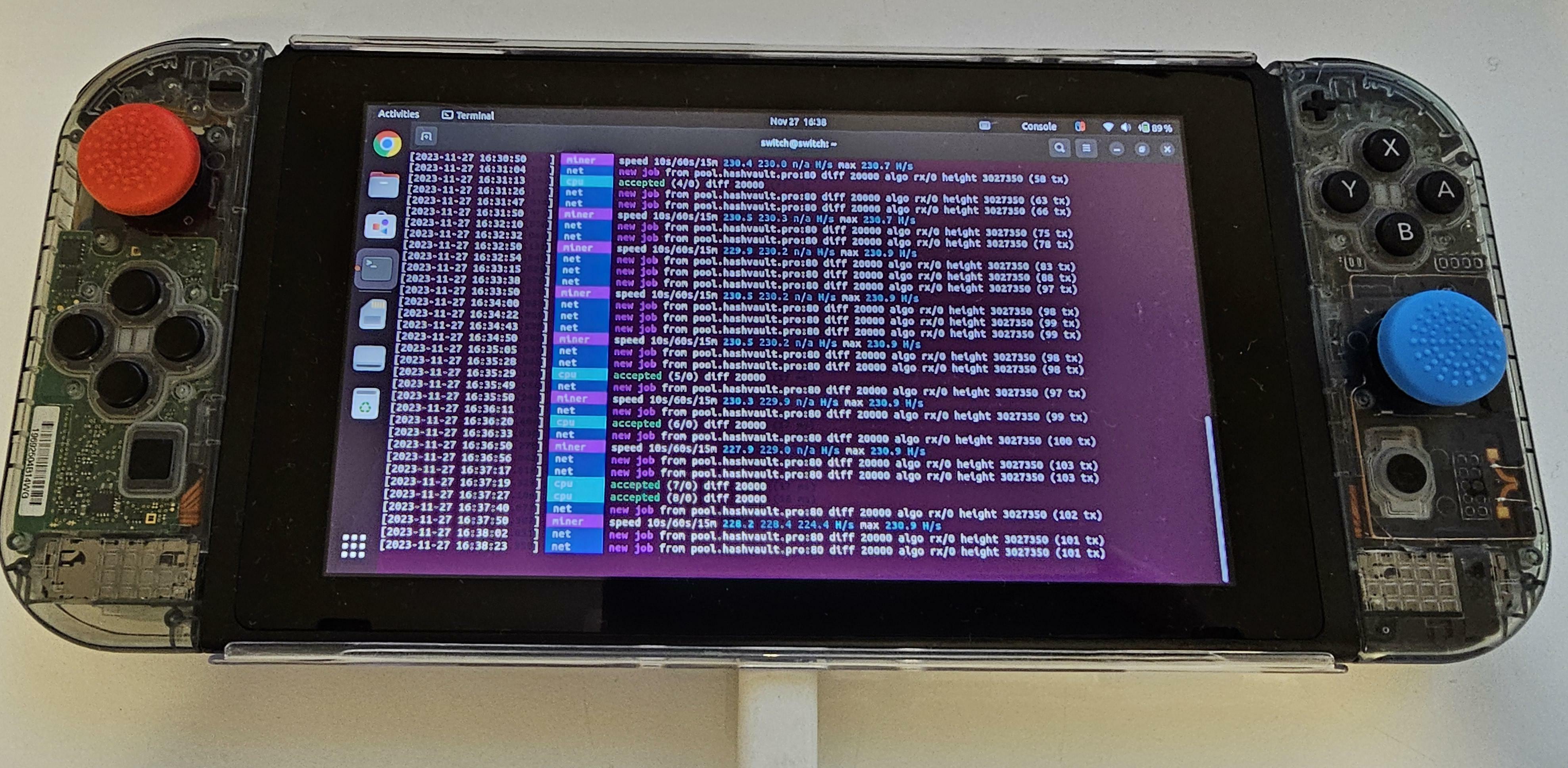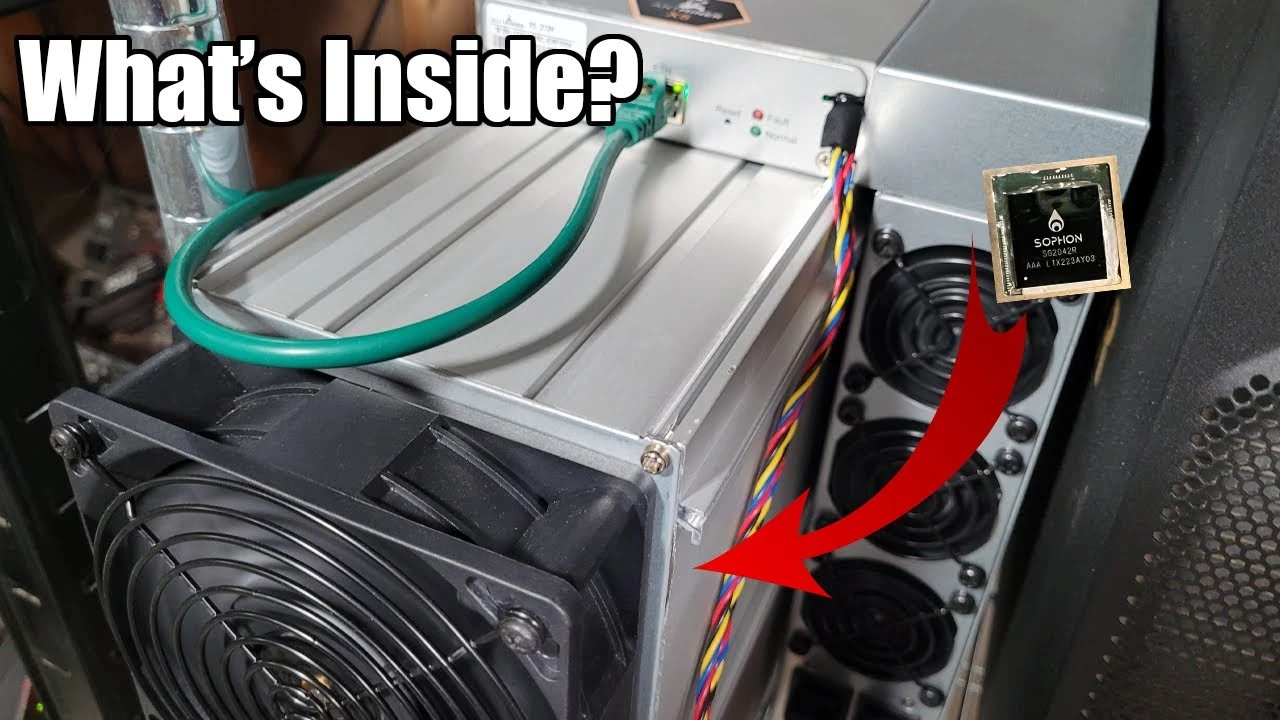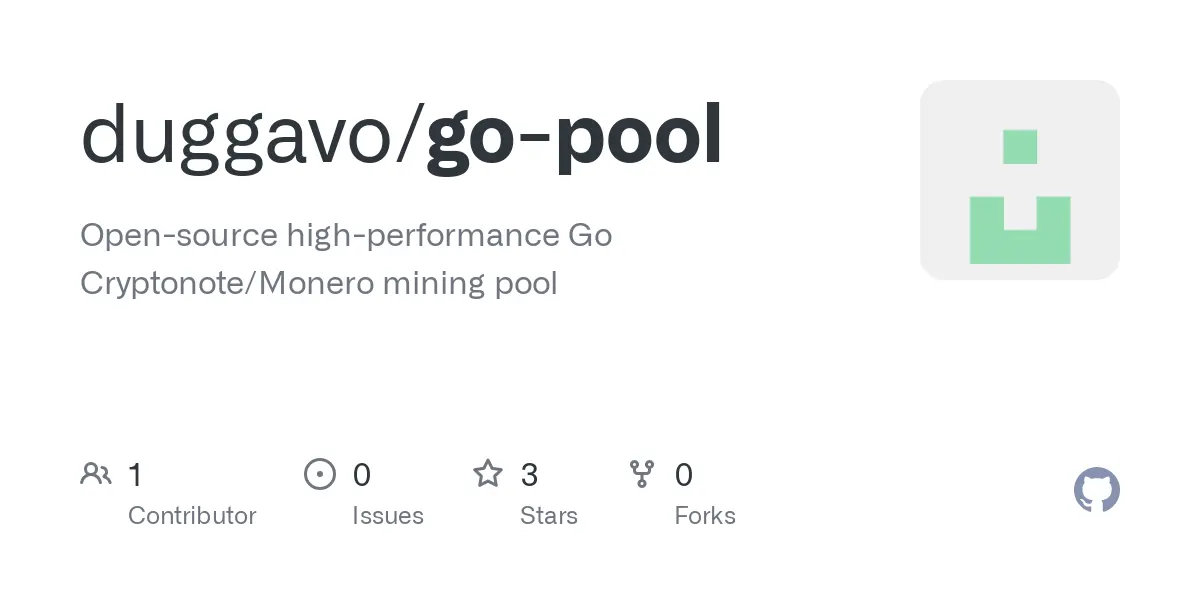Monero Mining
**P2Pool fork October 12th, 2024** Technically speaking, the new software has been running for some time - but the hashrate of P2pool is still around 7% of the Monero network. So everything seems to be running as expected. Any feedback, is the new version more demanding for the servers @XMRvsBeast? Did everything go smoothly as expected? I assume the next [revuo](https://www.revuo-xmr.com) issue will cover it. - *[https://p2pool.observer/](https://p2pool.observer/)* - *[https://github.com/SChernykh/p2pool](https://github.com/SChernykh/p2pool)*
cross-posted from: https://monero.town/post/4625590 > **[https://github.com/Cyrix126/gupaxx/releases/tag/v1.5.1](https://github.com/Cyrix126/gupaxx/releases/tag/v1.5.1)** > > **Gupaxx v1.5.1 important fixes** > > - Freeze after some time > - Xmrig could not be started after Xmrig-Proxy manually (Linux/MacOS) > - Node and Proxy custom args were not parsed correctly > - Node and Proxy custom args were applied if not empty in simple mode > - Unable to save node selection in Proxy Tab > - P2Pool status could not get green if verbosity level was below 3 > - Crashes on Wayland
Recently I've taken the docker compose example from SChernykh and have started a p2pool for Reddthat! https://github.com/SChernykh/p2pool/tree/master/docker-compose (many thanks here!). After some minor changes I removed the IP listing from statistics and increase the visibility to 100 "supporters". It's viewable at donate.reddthat.com. (if @admin@monero.town wants the code change I can provide diff) The idea was to also allow people to donate to instances via CPU instead of actual $. My question for the community is whether I am creating a centralised pool or am I still participating in a decentralized fashion?

cross-posted from: https://monero.town/post/3797074 >  > > https://github.com/Cyrix126/gupaxx/releases/tag/v1.3.0
Gupaxx is a fork of Gupax integrating the XMRvsBeast Raffle, it is also a maintained software. It is made to make in the most easy way possible mining on P2Pool while optionally participating (but you will want to 😉) in the XMRvsBeast raffle.
Since the dramatic decrease in hashrate[1] on 29/05/24 from ~2.8 GH/s to ~1.8 GH/s as of 01/06/24. This has shaken up the pool distribution[2]; as a result, nanopool now holds ~576 MH/s (30% of the total 1.8 GH/s.)This isn’t a five-alarm fire, but it is mildly concerning. This can potentially repeat the MineXMR 51% scare of 2022[3]. If any of you fine folks would consider mining on a decentralised pool such as p2ool[4], now is the time. Ps, I am in no way affiliated with p2ool. Happy mining. [1] https://www.coinwarz.com/mining/monero/hashrate-chart [2] https://miningpoolstats.stream/monero [3] https://cointelegraph.com/news/monero-community-concerned-as-leading-mining-pool-nears-51-of-ecosystem-s-total-hash-rate [4] https://p2pool.io/#pool ~baz

There are a lot of cats, but only a few photos.These are the stray cats on campus. There are a lot of stray cats in the campus, and sometimes there are good people to feed these cats cat food. But during the school holidays, when the students are on vacation, the cats can't eat as usual. During the holidays, they have to starve. I am a cryptocurrency enthusiast and a college student. Here to collect donations from cat lovers or caring people in the community. The money will be used to provide cat food to the stray cats and bring them warmth! If you donate money, or you promote the awareness of protecting animals and loving animals, I would like to thank you on behalf of cat lovers! If there is extra money, we will use it to treat the sick cat.🥰 As suggested, we will use the extra money to spay or neuter the cats and look for people who are willing to adopt stray cats. 👍 👍 My contact information: lucyishere520@gmail.com This is an application for a fundraiser. https://kuno.anne.media/fundraiser/mksi/

Head on over to https://gupax.io/ and start mining Monero like a champ. TODAY!

cross-posted from: https://monero.town/post/2706953 Available @ https://github.com/Cyrix126/gupaxx > Hop into https://matrix.to/#/#xmrvsbeast:monero.social if you have questions or issues.

cross-posted from: https://monero.town/post/2543868
Someone on Matrix thought it would be useful for me to post my p2pool setup for people to see annd use if they wanted. So here it is. 1. node configuration: in my monerod node folder I have a file called "start.sh" with 755 permissions. the file contains `./monerod --config-file=./persist/monero.conf` the monero.conf file in "./persist/monero.conf" contains `##### Add Priority Nodes (suggested by P2Pool) #####` `#` `add-priority-node=p2pmd.xmrvsbeast.com:18080` `add-priority-node=nodes.hashvault.pro:18080` `#` `##### DNS Settings (suggested by P2Pool) #####` `#` `disable-dns-checkpoints=1` `enable-dns-blocklist=1` `#` `##### RPC Setup #####` `#` `#restricted RPC` `rpc-use-ipv6=1` `rpc-restricted-bind-ip=0.0.0.0` `rpc-restricted-bind-ipv6-address=::` `rpc-restricted-bind-port=18089` `rpc-ssl=autodetect` `rpc-ssl-certificate=./persist/MoneroCert` `rpc-ssl-private-key=./persist/MoneroCertPrivateKey` `#Make rpc public` `confirm-external-bind=1` `public-node=1` `#` `##### ZMQ (for P2Pool) #####` `#` `zmq-pub=tcp://127.0.0.1:18083` `#` `##### Peers and rate limits #####` `#` `#node connects to peers` `out-peers=8` `#` `#connections to node from other peers` `in-peers=8` `#` `#limit uplink speed to ~8mbps` `limit-rate-up=1024` `#` `#limit downlink to ~24mbps` `limit-rate-down=3072` the cert files mentioned were created using ./extras/monero-gen-ssl-cert 2. p2pool configs Again i use a file called "start.sh" with 755 permissions for this because i am lazy `./p2pool --host 127.0.0.1 --mini \ --wallet 459hQmByGGyZaSSV51vygKdfBkAoyVHhjTq65bUipJADN915JXZxq6fNxjbBUVzGvPMm8iXQT6TxmiZVBn5pCkhi1EiXA5p` That part is pretty simple. Now for a little deviation. I use xmrig-proxy for this but you could just point regular xmrig directly to p2pool. my xmrig-proxy also has a "start.sh" with 755 which looks like this. `pool="127.0.0.1"` `port="3333"` `host=$(hostname)` `#` `./xmrig-proxy --algo=randomx --donate-level=0 \ -b 0.0.0.0:3331 \ -o $pool:$port -u x+170000` the "-u x+170000" is the total difficulty i want but could most likely be left out. 3. miner config Again I have a "start.sh" with 755 permission `pool="ip of xmrig proxy or p2pool"` `port="port xmrig proxy or p2pool is listening on"` `host=$(hostname)` `TotalThreads=$(grep -c ^processor /proc/cpuinfo)` `MinerThreads=$(echo "$TotalThreads/2" | bc)` `#` `sudo ./xmrig -o $pool:$port --donate-level=0 --algo=randomx \` `-u +20000 \` `--rig-id $host --huge-pages-jit --randomx-1gb-pages -t $MinerThreads \` `--cpu-no-yield --cpu-memory-pool -1 --cpu-max-threads-hint 90` the reason i mentioned deviation above is because if you have all your miners and the p2pool/monerod on the same network you COULD just point each xmrig directly at the p2pool instead of doing it through xmrig-proxy like i have done here. I was using it to keep from duplicating work when i used centralized mining pools and it was lowering my total hashrate. However, if you had miners on multiple different networks say at home and at a friends house or vacation home, etc you could put up an xmrig-proxy and have that connect to your p2pool and have all miners on that network connect to that xmig-proxy in order to limit the requests to your p2pool from multiple clients on the same network. So instead of 10 requests from 10 miners on your vacation house network there would only be one request from the proxy and then those 10 miners would talk to the proxy locally Edit: i like to run everything in screens, so `screen -S monero` `cd directory/of/monerod` `./start.sh` CTRL+A D `screen -S p2pool` `cd directory/of/p2pool` `./start.sh` cTRL+A D `screen -S proxy` `cd directory/of/xmrig-proxy` `./start.sh` CTRL+A D `screen -S miner` `cd directory/of/xmrig` `./start.sh` CTRL+A D
I have a Proxmox server on my LAN on my home network. I have one LXC container running Debian 12 and the Monero CLI tools provided at the following URL: (https://downloads.getmonero.org/cli/linux64). All LXC containers referenced herein will be running Debian 12. On that first container, I run 'monerod' in a screen session, so I can detach and leave it running 24/7. If there is a better way to do this, like having it autostart upon reboot, I would like to learn how to do that, but I will still want to see the live log somehow, maybe using tails on a logfile or something, but I don't know where that logfile is located or how best to view the live status of the daemon. Also on that first container, I'd like to run the cli wallet and mine Monero on that machine, which I'm not familiar with how to do that using the CLI wallet. Next, I wanted to create another LXC container that is only running the CLI wallet, but connects to the node running on the first machine. If this is possible and works, I'd do a few more until I max out on CPU and RAM utilization of my Proxmox host. Lastly, I'd also like to have the blockchain only stored on that one LXC host, so my existing blockchains on my other PC's where I'm running the GUI can be eliminated, if that makes any sense, and have those GUI wallets point to my node running on the first LXC container running the 'monerod' daemon 24/7. In summary, what I need help with is the following: 1. How to have 'monerod' autostart on the first LXC container (ip addr: 192.168.10.210) 2. How to view live view of the monerod daemon doing it's thing 3. How to mine Monero from the wallet cli on first LXC container 4. How to mine Monero from the wallet cli on second LXC container (ip addr: 192.168.10.211) that uses a remote node, specified as the first container referenced in step 1 above. 5. How to configure GUI to mine using the LXC container running the node daemon as a remote node I'd appreciate any links with instructions that might help me do all or part of what I'm trying to accomplish using the home server. If suggestions prove out on my network, I'm happy to fully document the entire setup, including the steps to configure Proxmox for the community to do the same thing. Best Regards, prancing389

cross-posted from: https://monero.town/post/2147915 > The calculator takes into account historical data and also calculates the odds for you. Needless to say joining the raffle is a no brainier. 🧠 > > P2Pool already is the best way to mine Monero. Now with the Bonus Hashrate raffle (https://xmrvsbeast.com) it is the best way to mine, period. > > You can now verify that all selections are actually random and no cheating is taking place by the raffle admin. Click on "Recent Winners" and follow the verification instructions. > > Join us (1800+ miners) in making P2pool #1 in dominance as it should be and Monero mining fully decentralized! (https://moneroj.net/p2pool_dominance/)

cross-posted from: https://monero.town/post/1975340 > Mining Monero on P2Pool has never been more fun! > > Visit the rules page to see how to participate and win BIG! > > https://xmrvsbeast.com/p2pool/rules.html
cross-posted from: https://monero.town/post/1681563 > To keep the raffle fair and competitive miners are now required to have a share in the PPLNS window to win the raffle. > > You can now register an address to the raffle without having to wait to be in the PPLNS window. > > A whale donor round was added for miners donating 100kH/s or more. > > Please see the rules page for more details. > > Let's get that hashrate up! Good luck and have fun. ;)
"We are now actively developing a new testnet using RandomX."
Figured you guys might enjoy my little winter project. I have an always-on server + my gaming PC in my office set up with xmrig. I have electric baseboard heaters in my apartment (PNW, USA) so as long as I'm not heating my office past my normal setpoint the electricity is essentially free. How I set this up: - ESP32 flashed with ESPHome + MCP9808 temperature sensor takes a reading of the ambient temperature every minute and sends it to homeassistant - Homeassistant feeds that temperature (as well as a controllable setpoint) to a python script - Python runs a PID controller based on the room temp and setpoint - I use the XMRIG http API to pause/resume and dynamically control the number of threads used for mining Here's the result:  Keeping my room +/- 0.5 degrees from the setpoint while mining If you guys are interested I can post more details. I've had my baseboards off for over a month now with outside temps below freezing.
> Apparently, the Nintendo Switch gets 230 hashes per second mining #Monero [](https://images4.imagebam.com/0b/1f/e1/MEQJHKY_o.jpg) Can you mine crypto with a Nintendo Switch? https://cryptonews.net/news/mining/27918548/ > Interestingly, RandomX, the Monero mining algorithm, allows for alternative experiments like this due to being ASIC-resistant. Miners can use simple CPUs or gaming devices to run the algorithm and try their luck at block discovery while supporting network security.
⛏️ **__Fair CPU pool mining introduction__** **Monero (XMR)** is one of the only projects which offer a way of mining in a pool as it should be implemented, with **P2Pool**: - **Fair** - Instant payouts according to your share. - **Decentralized - No pool owners** - No centralized party handling the **P2Pool**. - **Decentralized - Pool participants** - Due to the **RandomX** algorithm being used, no specialized Antic miners can be built for XMR. Meaning that an average Joe can still participate and earn shares with their CPU. - **Private** - XMR itself continuously aims for the best possible privacy cryptography can offer. **__Source Code / Links:__** - **Gupax:** A GUI (Graphical User Interface), to easily mine Monero on P2Pool using XMRig https://github.com/hinto-janai/gupax https://gupax.io/ - **P2Pool:** Peer to peer pool, truly decentralized pool for Monero mining https://github.com/SChernykh/p2pool https://p2pool.io/mini/#pool https://p2pool.io/#pool - **XMRig:** RandomX, KawPow, CryptoNight and GhostRider unified CPU/GPU miner https://github.com/xmrig/xmrig https://xmrig.com/ - **RandomX:** Proof of work algorithm based on random code execution https://github.com/tevador/RandomX - **Monero:** The secure, private, untraceable cryptocurrency https://github.com/monero-project/monero https://www.getmonero.org/ - **Monero GUI:** Official Monero GUI, for wallet, miner and monerod node https://github.com/monero-project/monero-gui - **P2Pool Observer:** Monitor various P2Pool stats https://mini.p2pool.observer/ https://p2pool.observer - **XMRvsBeast:** Enter a free lottery, only for participating XMR miners, to win a chance of a short, but serious boost in your hash-rate / payouts! https://xmrvsbeast.com/p2pool/ - **Monero Fail:** An extensive list of publicly hosted monerod nodes https://monero.fail/ ⛏️ **__Fair CPU pool mining guide__** This guide will help you setting up a fair **Monero** miner, please note, that you still will have to create your own config files for: **Gupax**, **P2Pool** and **XMRig** 1. Use **Monero GUI** to create a wallet 2. Use **Monero GUI** to run your own **monerod** instance (Monero Node daemon), configure following startup flags under: Monero GUI => Settings => Node => Daemon startup flags: ```properties --zmq-pub=tcp://127.0.0.1:18083 --out-peers 32 --in-peers 64 --add-priority-node=p2pmd.xmrvsbeast.com:18081 --add-priority-node=nodes.hashvault.pro:18081 --disable-dns-checkpoints --enable-dns-blocklist --prune-blockchain --sync-pruned-blocks --db-sync-mode=safe --log-level 1 ``` These startup flags will help with: - Blocking malicious nodes - Keeping your copy of the blockchain as small as possible - Provide logging incase a `priority-node` goes down (Use **Monero Fail** for replacements) 3. Configure the **P2Pool** + **XMRig** binary paths in **Gupax** under: Gupax => Gupax => P2Pool/XMRig PATHs 4. Use **Gupax** to run **P2Pool**, connect to your local **monerod** instance by configuring P2Pool as following: Gupax => P2Pool => P2Pool Mini => Fill in the following: ```properties Name = Local Monero Node IP = 127.0.0.1 RPC = 18081 ZMQ = 18083 Out-peers = 32 In-peers = 64 ``` 5. Use **Gupax** to run **XMRig**, connect to your local **P2Pool** as following: Gupax => XMRig => Command arguments *(configure `--threads` as desired)*: ```properties -c config.json -o 127.0.0.1:3333 --http-host 127.0.0.1 --http-port 18088 --threads 30 ``` This will make it possible to load a `config.json` file from the same directory as the XMRig binary **__Notes__** - If you're gonna run on normal end-user hardware (e.g. Desktop/Laptop/Smartphone), then I'd recommend to mine on **P2Pool Mini** instead of the main **P2Pool** - Your **P2Pool wallet adress is public**, periodically move mined funds to a new, truly private XMR wallet - My use-case? I mine to support the cause and to earn a little back from heating my room during winter times 😄

Most notable rumor is 8 channel ddr5 at 8500 MHz. They are efficient mobile processors tho... Mac forums had he most informative discussion I could find.
I've had an xmrig process running on Linux terminate after printing "Aborted." twice in the last week, never seen this before. Anybody know what might be the cause? System was recently upgraded to Debian 12 and had an NVMe stick put in.
The bug fixed in cURL 8.4.0 (CVE-2023-38545) is a nasty one, but it seems rather harmless in our context. First of all, if you don’t use socks5, this issue should be irrelevant. (But do your own research. Source code is there for you to freely study, modify, compile.) According to the [blog](https://daniel.haxx.se/blog/2023/10/11/how-i-made-a-heap-overflow-in-curl/), the bug could be exploited only if a socks5 proxy user is tricked to resolve a crazy long hostname (~1024 characters+), which sounds unlikely; except if your direct peer is evil, they might be able to send you a crazy long hostname instead of a numeric IP… maybe? However, if you’re on socks5 proxy, the attacker can’t see your real IP to begin with, so they can’t attack you (I think). The only attack vector my stupid head can think of is: if for some reason you use both clear connections and socks5 connections, then a lucky attacker who notices your behavior can hit your real IP when you’re on Tor, using your wallet address as an identifier. (Tor exit nodes are public, so they know someone is on Tor.) Even then, *maybe* the worst thing that could happen is that your p2pool crashes due to buffer overrun.
 youtu.be
youtu.be
Sophon SG2042R SOC Risc-V 64cores (2ghz), 64mb-cash, 8gb DDR4 3200
**0% fee mining SWITCH NOW** It is the officially recommended way to mine Monero! Here are seven easy steps: - **1)** [Download ](https://github.com/hinto-janai/gupax/releases)the bundled version of Gupax **examples**: > windows file: [gupax-v1.3.1-windows-x64-bundle.zip](https://github.com/hinto-janai/gupax/releases/download/v1.3.1/gupax-v1.3.1-windows-x64-bundle.zip) > macOs file: [gupax-v1.3.1-macos-x64-bundle.tar.gz](https://github.com/hinto-janai/gupax/releases/download/v1.3.1/gupax-v1.3.1-macos-x64-bundle.tar.gz) - **2)** Extract - **3)** Launch Gupax - **4)** Input your Monero address in the P2Pool tab (or create a new one for mining) - **5)** Select a Remote Monero Node (or run your own local Monero Node) - **6)** Start P2Pool - **7)** Start XMRig *Motivation:* The hashrate of centralized pools increases; so: miners update the mining software and/or start new workers, but do not change their used pool to p2pool. p2pool should be used in general because it is the best technology and: - **0% fee** - **0 XMR payout fee** - ~**0.00027 XMR minimal payout** *Maybe an monero.town OP can pin this. It's important.*
Anyone feel they can explain what this is better than p2pool already does? I have been mining for a month on a new address and have one "sweep transaction" I was able to look up. Mine is 0.01+ and a bunch change and its at the block height very close to where I sent 0.01 xmr to this very site to prove I was human. Can anyone provide any insight? Thanks
Coming "This Fall" How will it hash RandomX?

Previous post: https://monero.town/post/279294 Finished building and setting up my 4 3900 builds, read my previous post for more details. Figuring out the best way to build them into the shelf was a lot of trial and error, especially with cable management. Took a few hours, but I'm glad it worked out in the end. I was satisfied with my undervolt on the first rig, but unfortunately I was not able to transfer it to the second. I ended up just using dcop and keeping all the cpus stock for uniformity instead of individually overclocking all the machines. Right now they're doing 12.2-12.4kh/s at 80-84c which is making the room quite toasty, should be nice in the winter (not so much in the summer). Would ROI in about 3 years at the current rate. The top machine is a 5600x which I use as a home server, running monerod and p2pool. I used to run nixos but I eventually switched back to alpine like the other 5 machines. Currently using docker-compose and nixery. Sorry the text is so dense, feel free to ask questions.

A big thanks to SChernykh for the continued effort in maintaining this important piece of the Monero ecosystem! Make sure to visit https://p2pool.io/ and drop a nice donation! 👛
https://github.com/kilopool/kiloproxy by Kilopool.com
**P2Pool** v3.6.2 was released. **There were no code changes** since v3.6.1, **but the MacOS aarch64 build and Windows build were re-compiled** with the previous compiler same as in v3.5, to fix reported stability issues. It is said: “If the previous version works fine for you, you don't need to update.” but **even if you think v3.6.1 is working**, you may want to carefully monitor the situation (e.g. Hashrate / CPU temperature) to see which compiler works better for you. **It is possible that keeping using v3.6.1 is better for some users**. Apparently it is not yet proven that the new compiler is the culprit for this, though a compiler optimization-related issue is suspected. Changes: - macOS aarch64 build is back to using old compiler (same as in v3.5) to fix reported stability issues - Windows build is back to using MSVC compiler (same as in v3.5) to fix reported stability issues > [Release P2Pool v3.6.2 · SChernykh/p2pool · GitHub](https://github.com/SChernykh/p2pool/releases/tag/v3.6.2) EDIT (Clarification for Windows users) - The previous (old) version (v3.6.1) was created with a NEW compiler, and is *supposed to run* faster (7-8% faster block verification), while there *might be* crashing bugs or other unexpected issues. - The current (new) version (v3.6.2) was created with the OLD compiler (same as v3.5), and is supposed to run only as fast as v3.5 (so 7-8% slower block verification, than v3.6.1), although it *might be* stabler.

If you are a p2pool miner make sure to join the raffle to win free hashrate! https://xmrvsbeast.com
Ampere ARM - Hetzner Matrix > https://www.hetzner.com/dedicated-rootserver/matrix-rx 80 cores, 128/256 GB DDR4 does XMrig scale?
**P2Pool** v3.6.1 was released. Changes: - Fixed Windows 7 compatibility - Fixed a crash when running as a systemd service > [Github - SChernykh p2pool](https://github.com/SChernykh/p2pool/releases/tag/v3.6.1)
**P2Pool v3.6** was released. Changes: - Avoid unnecessary block broadcasts and block requests to save traffic (works best when connected to v3.6+ nodes) - 2 times faster initial sync when connected to v3.6+ nodes - Release binaries for Windows are now built with clang compiler (7-8% faster block verification) - Tweaked how release binaries for other OS are built, binary sizes are reduced significantly - Fixed a rare data race bug that could happen during block verification - Added a full source code archive with all dependencies > [Github - SChernykh p2pool](https://github.com/SChernykh/p2pool/releases/tag/v3.6)
For the people who missed it: Monero os is a live linux system that starts mining monero on boot. It is inspired by nicehashOS but is completely free and open source. After some time of developing MoneroOS. I finally implemented the most requested feature. P2Pool! I am currently looking for beta testers to find issues and report back. You can join our public matrix room if you are interested `#moneroOS:matrix.org`. You can grab the latest release from https://github.com/4rkal/MoneroOS . Read about how P2Pool works on MoneroOS here https://github.com/4rkal/MoneroOS/wiki/P2Pool



